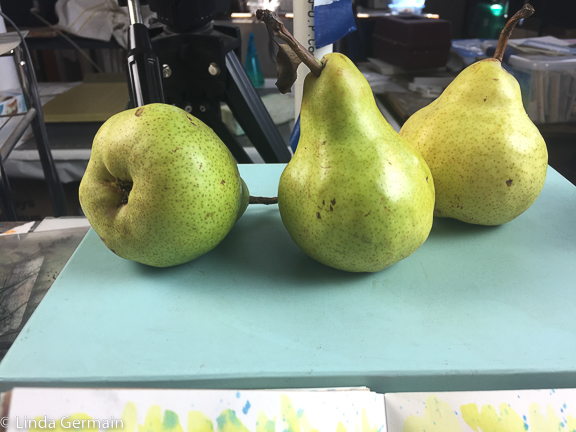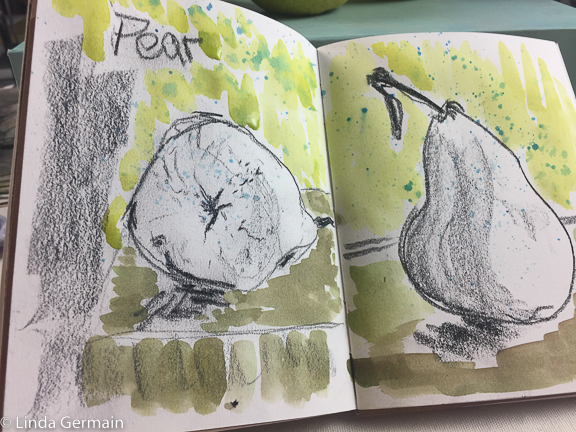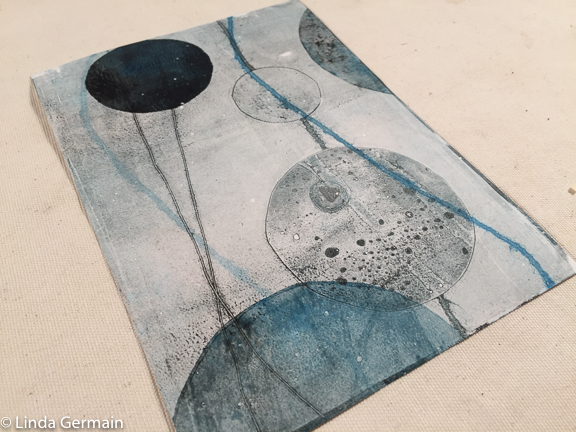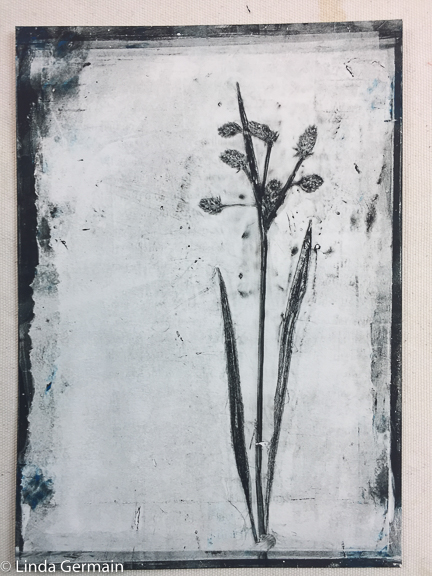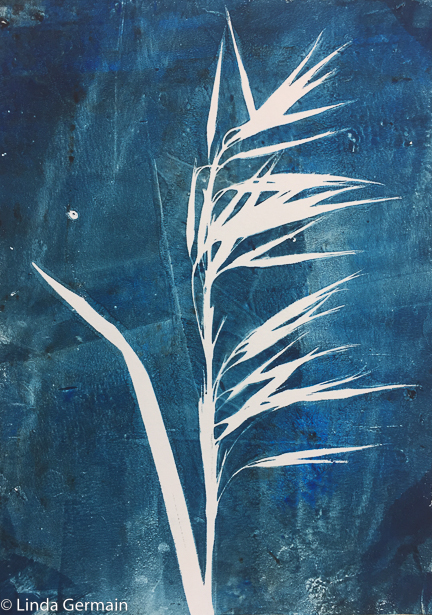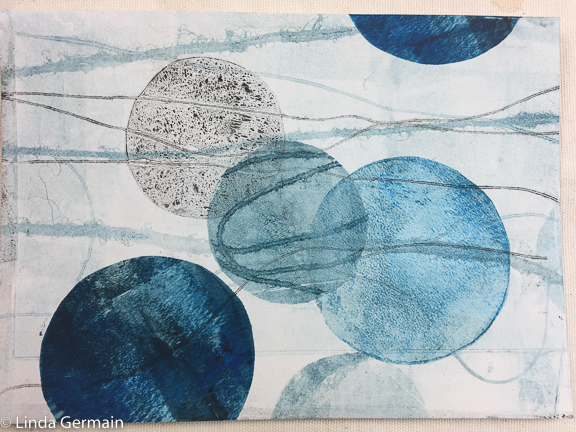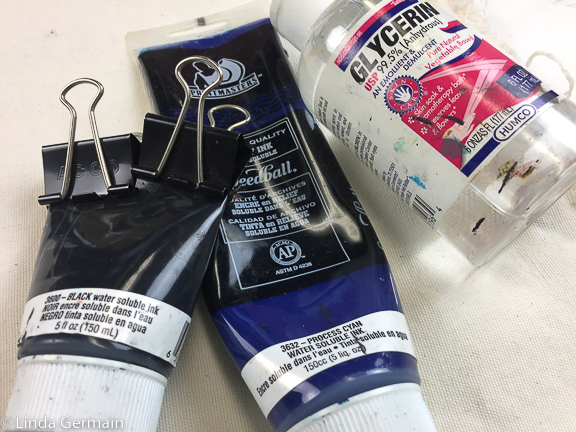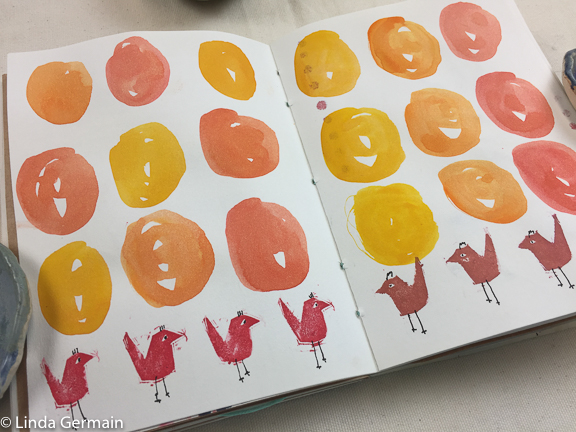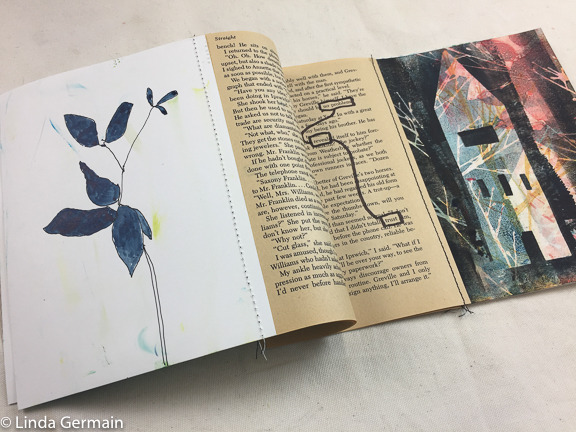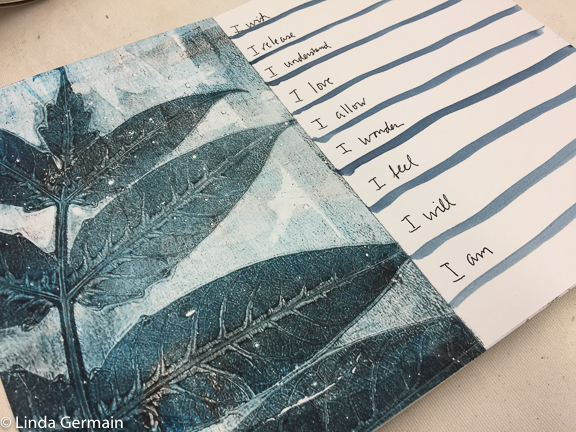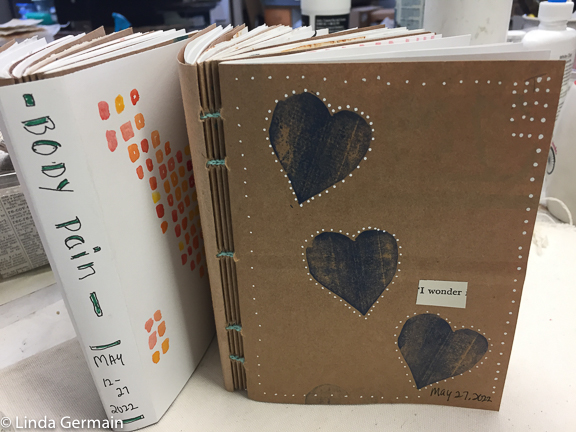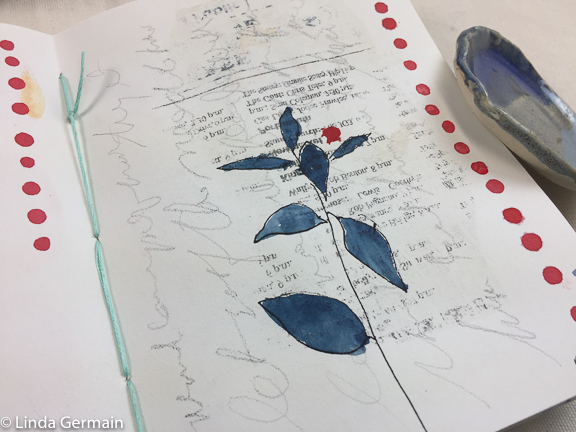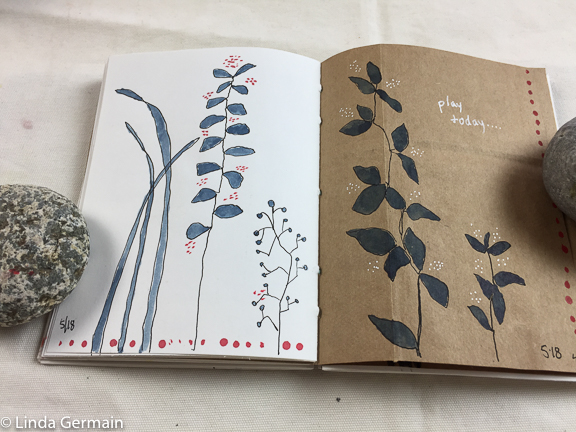When I first started gelatin printmaking, it was all about playing with the tools and discovering what kind of marks where possible.
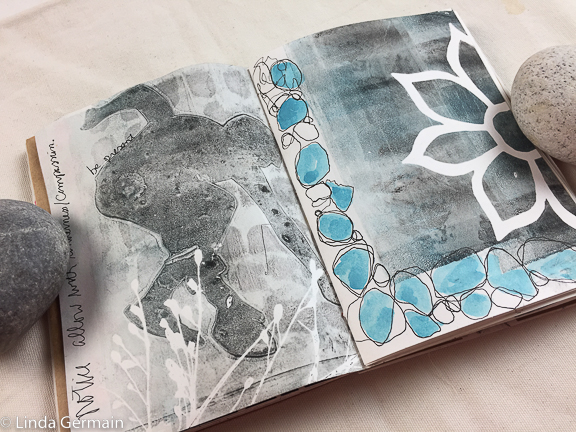
Recently, I noticed that I play less and have more expectations. I decided that I would benefit by getting back into that beginner’s mind of play and discovery.
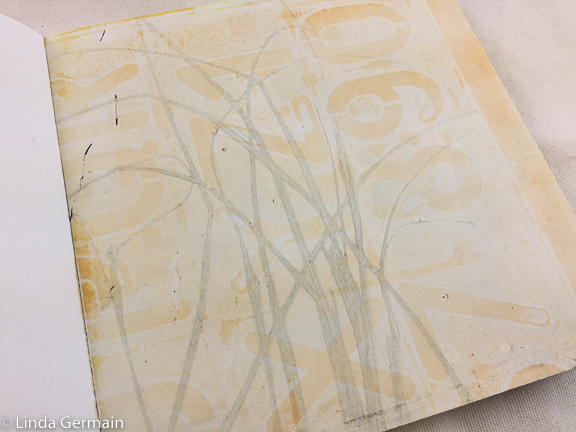
Ways that I embrace more play:
- Use non-precious paper – like 90 lb drawing paper
- If I think it, then try it
- Use non-usual colors
- Try to suspend judgement
- Allow what happens
- Don’t expect to have a lot of perfect prints
- Give myself time to warm up and get in the flow
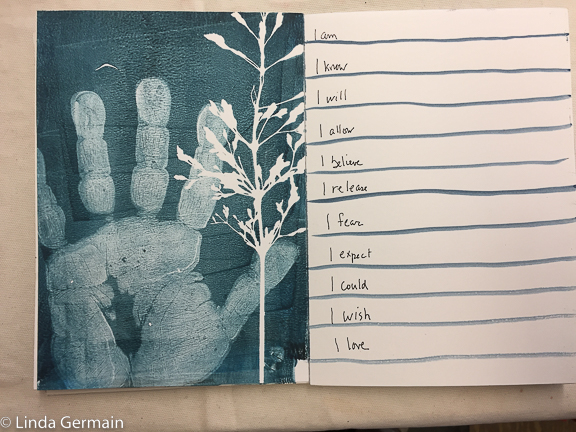
Discovery happens when I:
- Test out new grasses and weeds
- Flip through a pile of prints to notice what I like
- Make lots of mistakes and understand what is not working
- Move beyond what I already know
Some playful discoveries I have recently made:
- Compiling lots of prints into an “I wish” journal (above)
- Direct printing into my sketchbook pages (first image above)
- Found some new grasses that I like (orange image above)
- Added delicate ghost images to an accordion book (below)
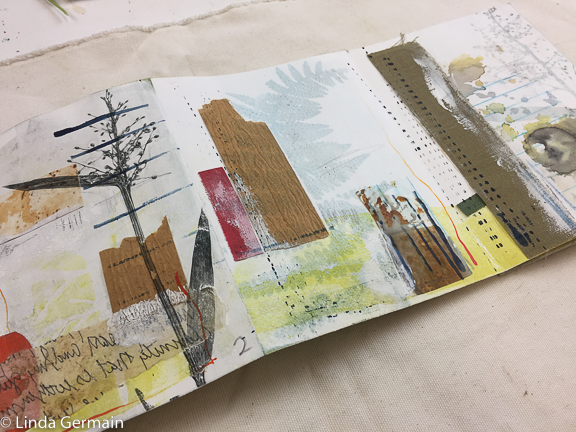
Gelatin printmaking can be a satisfying form of expression. If you want the recipe to make your own gelatin plate, then get it here.
